Listasafn Einars Jónssonar (Einar Jónsson Museum), Reykjavik
The final installment in our excursion to Reykjavik takes in the Einar Jónsson Museum. Jónsson, Iceland’s first sculptor, worked in a Symbolist style that makes his works haunting even today.
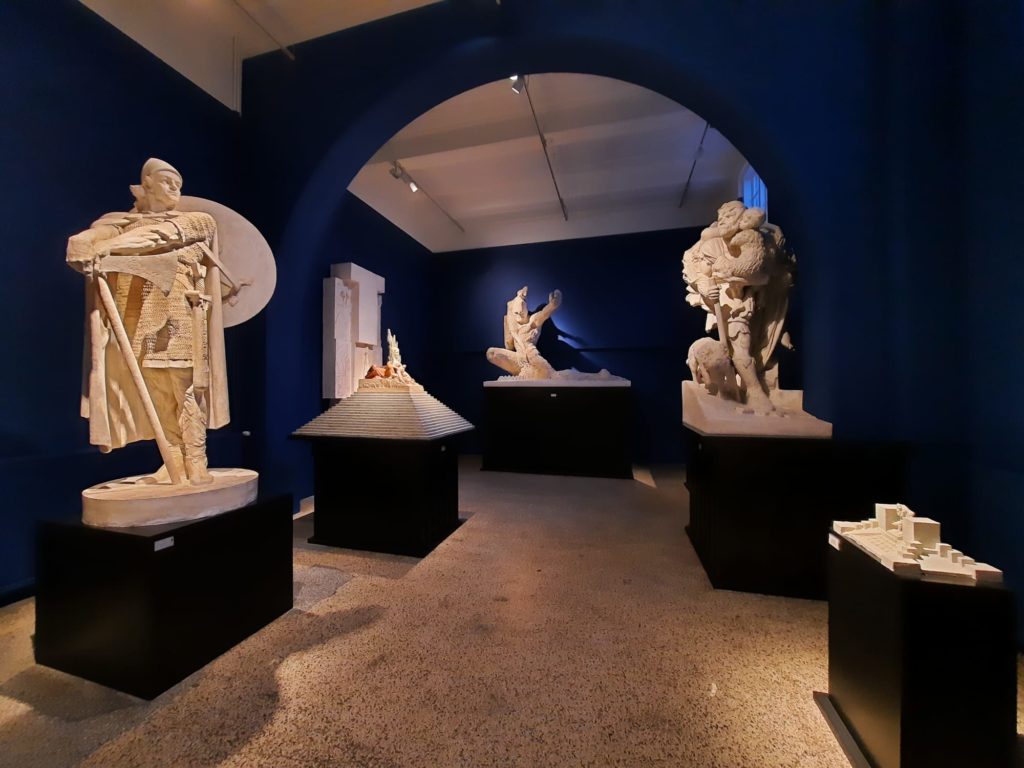
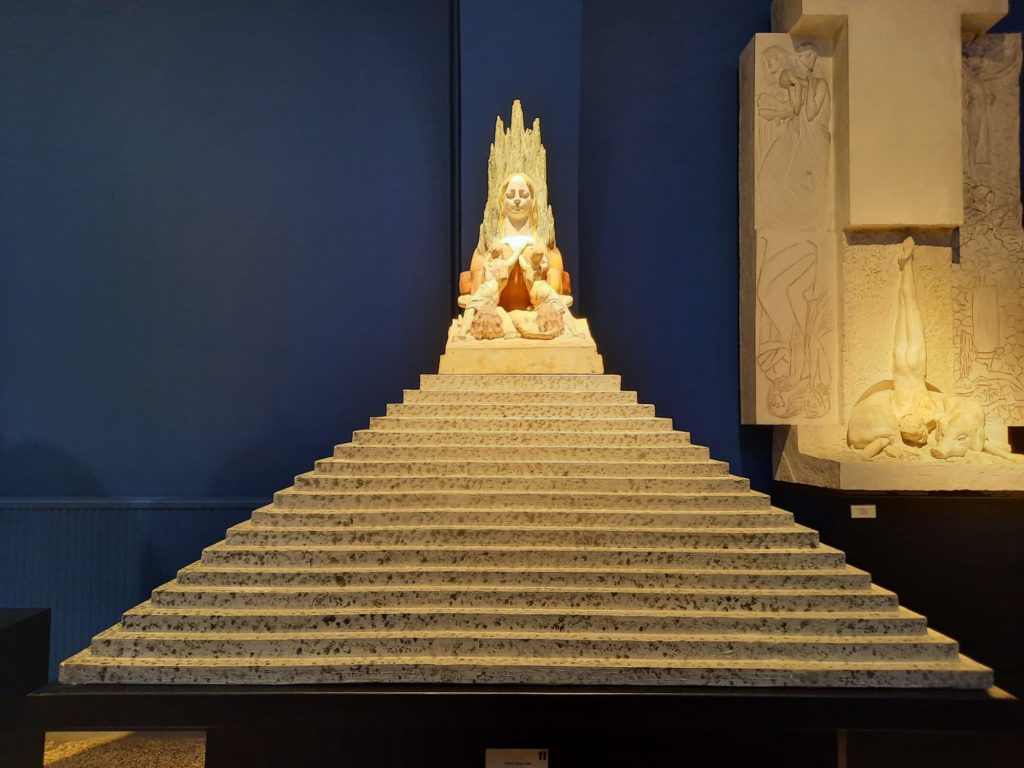
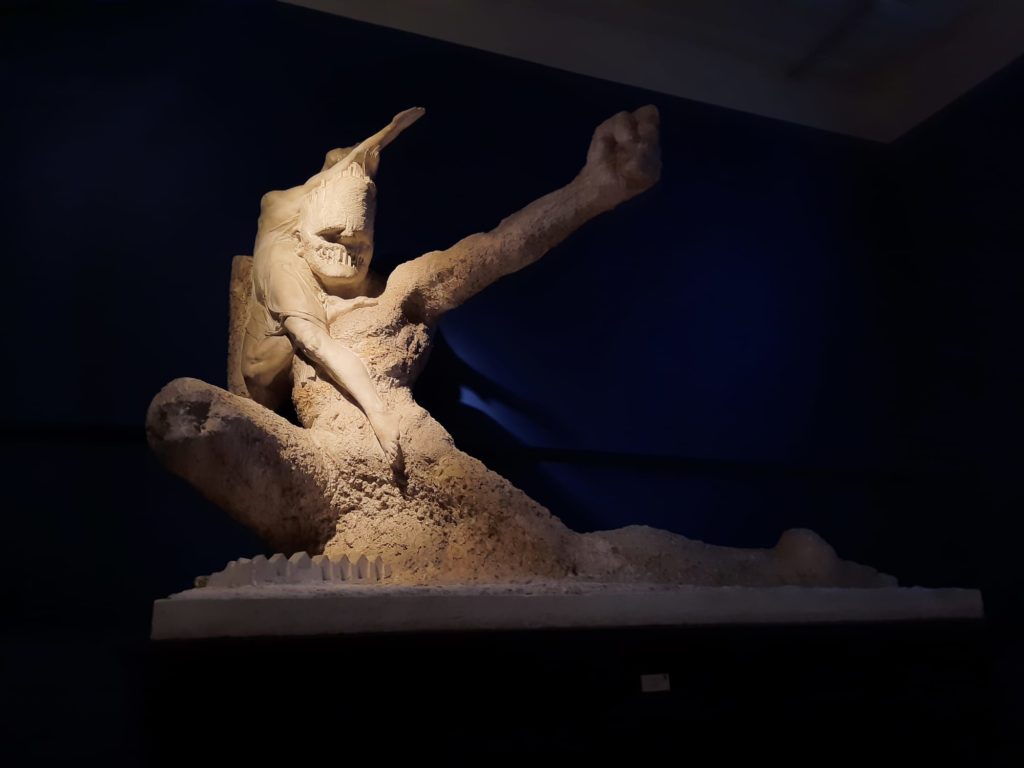
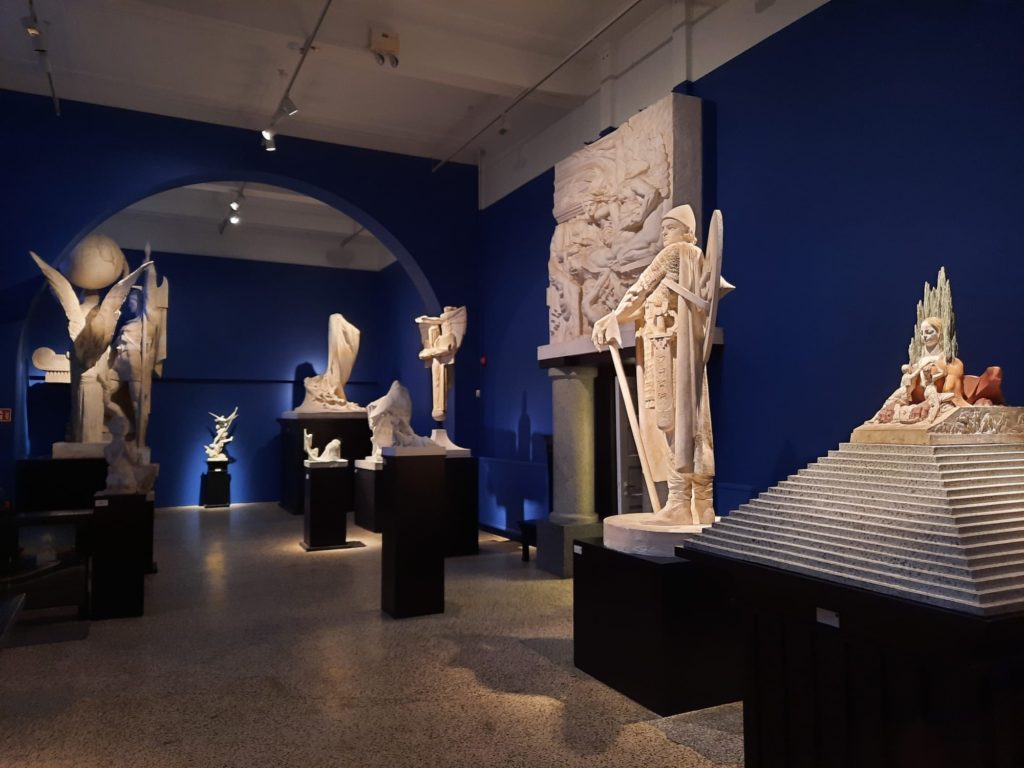
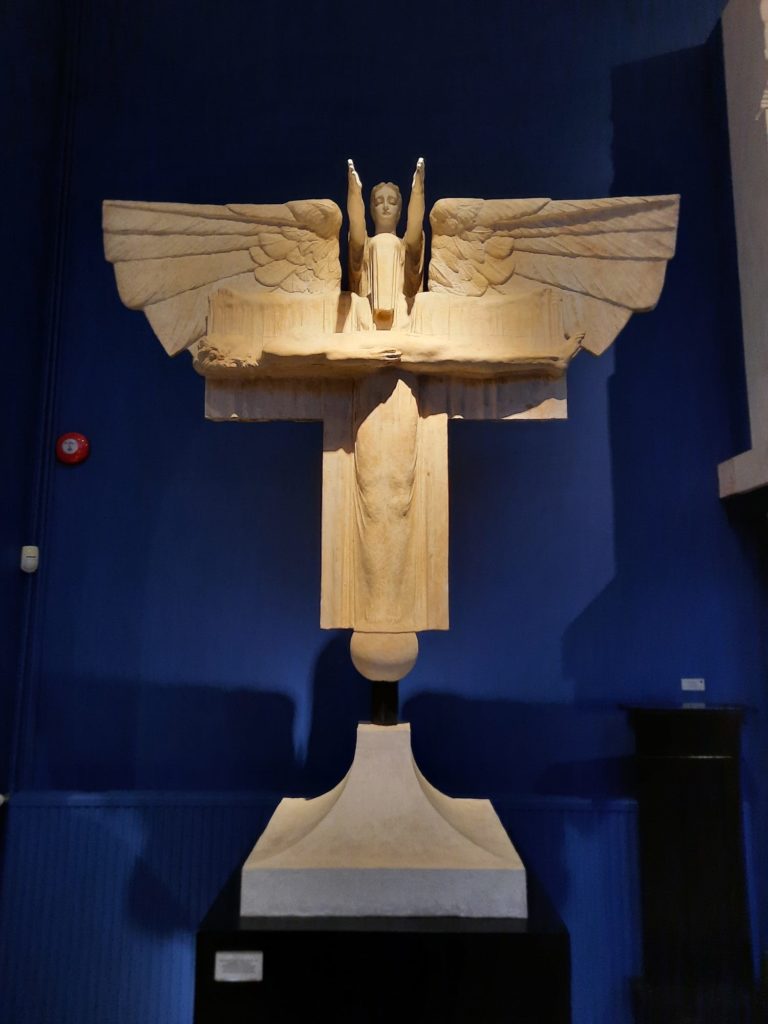

One Last Museum
Today marks the final installment in the Salterton Arts Review’s series on museums in Reykjavik. If you’re new here you can take a look at my Long Weekend Guide for Culture Lovers for some overall inspiration, or alternatively check out the homepage for many more museum posts. But all good things must come to an end. I was pondering this as I sat in the cafe of the House of Collections near Arnarhóll in central Reykjavik. The sun was beginning to set, and I had time for just one more activity (apart from shopping and a Christmas beer, which fortunately have extended hours). Should I pick the Reykjavik Maritime Museum or a museum dedicated to a sculptor I hadn’t heard of?
Clearly I chose the latter. My thinking in this is that (sorry) a maritime museum is a maritime museum. And I’ve visited them before. Boat technology, fishing industry, lives marked by the unforgiving ocean. A sprinkling of marine-themed art. Maybe a bit about a navy depending on where the museum is located. I would have found Reykjavik’s version of this interesting, but it wouldn’t really have added any new information to my life, apart from some local specificities.
I had seen the other option, the Einar Jónsson Museum, on my first day in Reykjavik. It seemed an intriguing museum: this sort of severe Jugendstil-esque building on top of the hill near Hallgrímskirkja. And I hadn’t spent much time getting to know any Icelandic artists in depth. So I made my decision and off I went. And if the Einar Jónsson Museum happened to be near the souvenir shops and Christmas beers I would be looking for on my last evening in Reykjavik, so much the better.

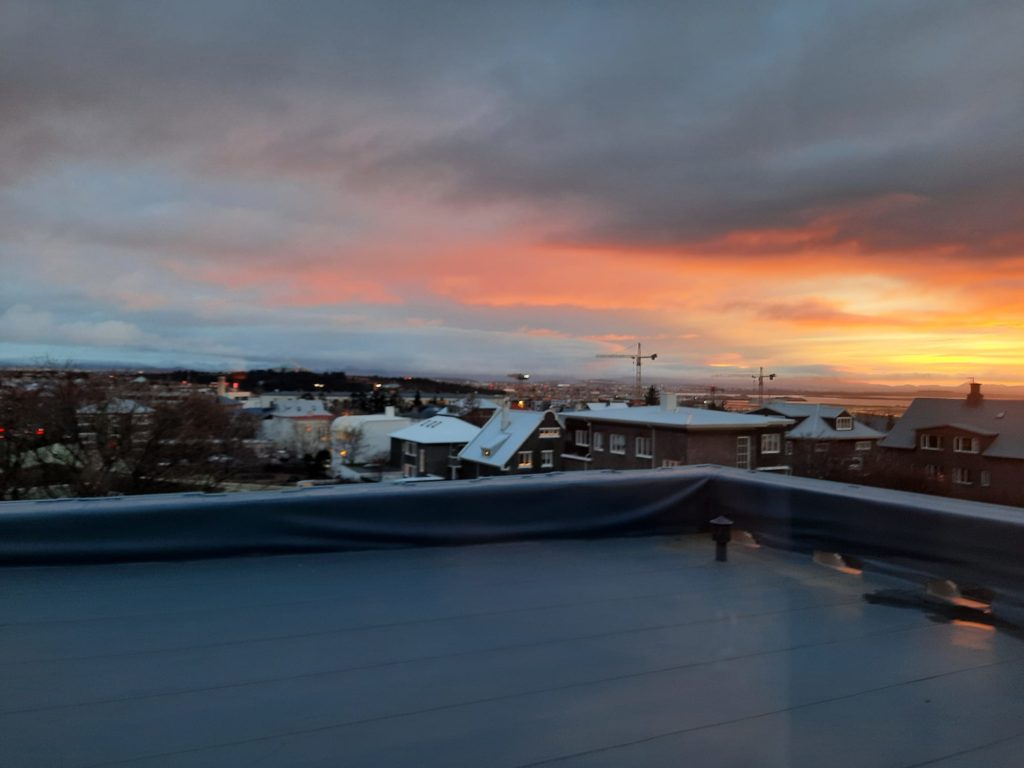


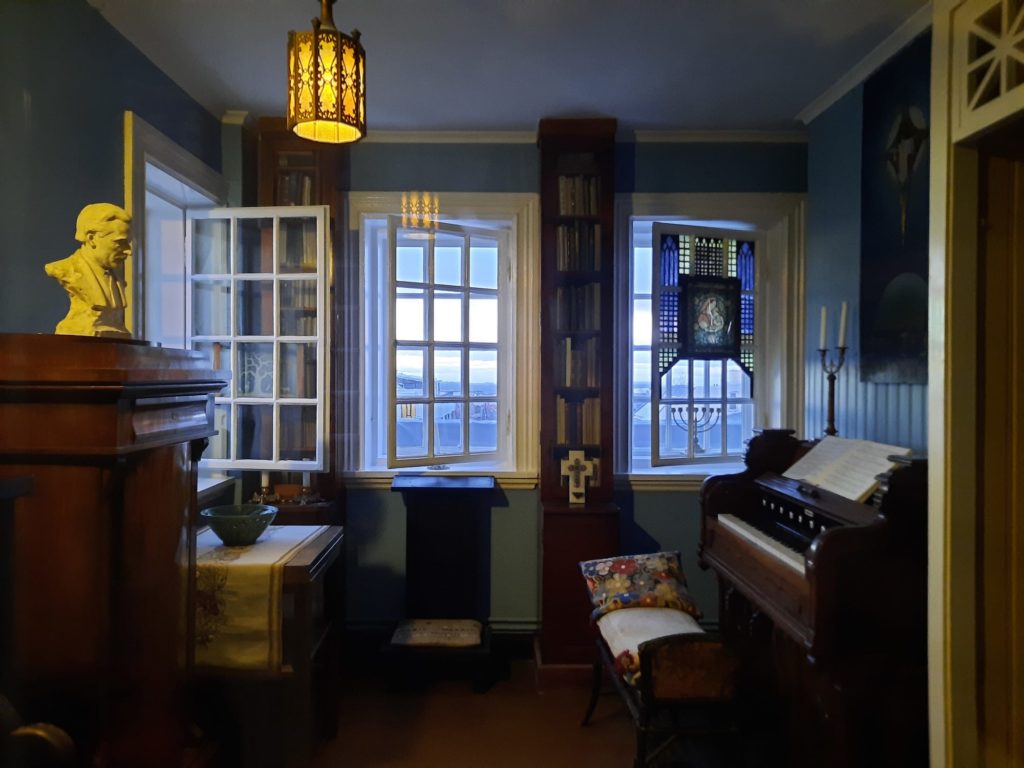
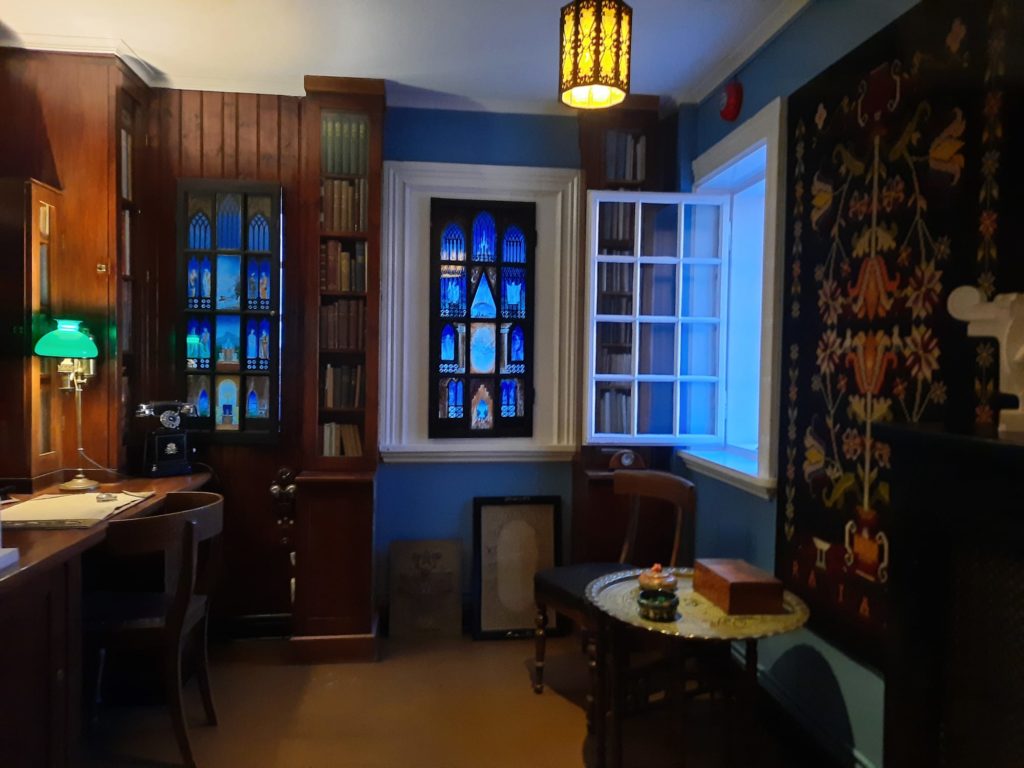
Einar Jónsson
So Einar Jónsson, as I mentioned, was Iceland’s first sculptor. Born in 1874, he showed artistic promise at a young age. There was no tradition of scupture in Iceland at the time, however, and thus no training for sculptors. So young Einar moved to Denmark to attend the Copenhagen Academy of Art. From there he went to Rome on a grant from the Icelandic Parliament, before moving back to Copenhagen.
In 1909, after almost twenty years away, he negotiated a return with the Althing (Parliament). He agreed to donate all his works to Iceland, if he were provided with a home and studio in Reykjavik. Initial designs for this live/work space were drawn up by with architect Guðjón Samúelsson, State Architect at the time and indeed Iceland’s first professional architect. This would have been a nice tale of local boys made good, but it wasn’t to be. Instead, the final building was the work of another architect, Einar Erlendsson, with input from Jónsson. The museum was opened on Midsummer’s Day 1923: the country’s first art museum.
Aside from a couple of years in the United States, Jónsson remained in Iceland and Reykjavik from this point forward. In later life he became more spiritual and increasingly reclusive, working on personal projects more often than paid commissions. He died in 1954.
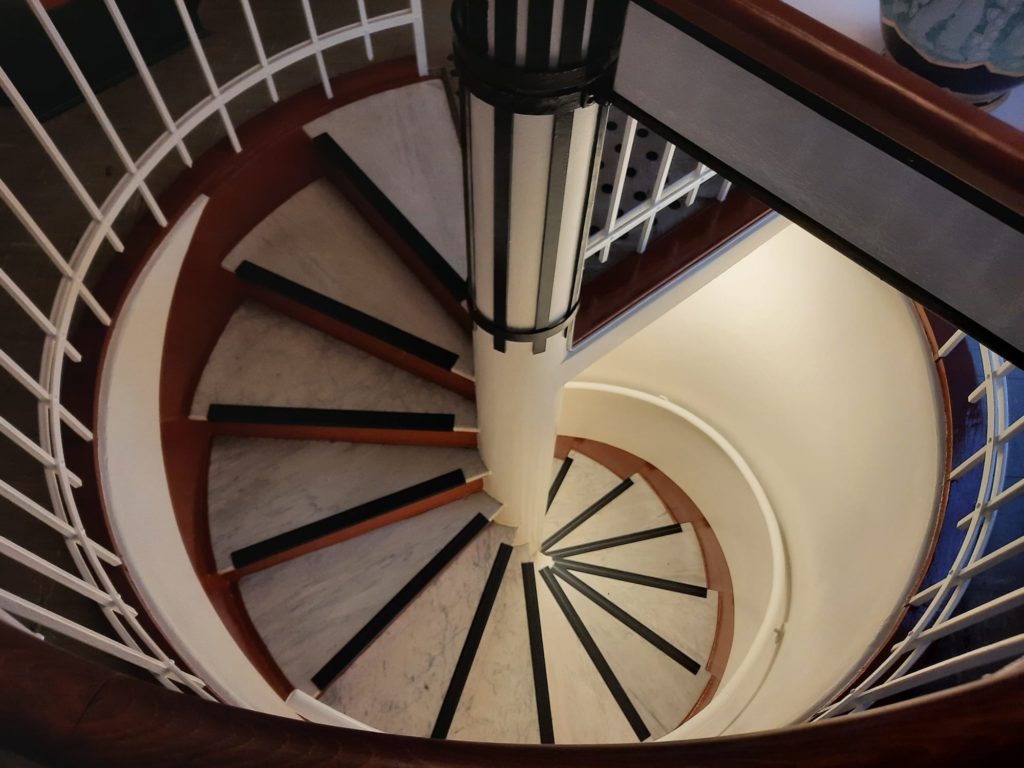


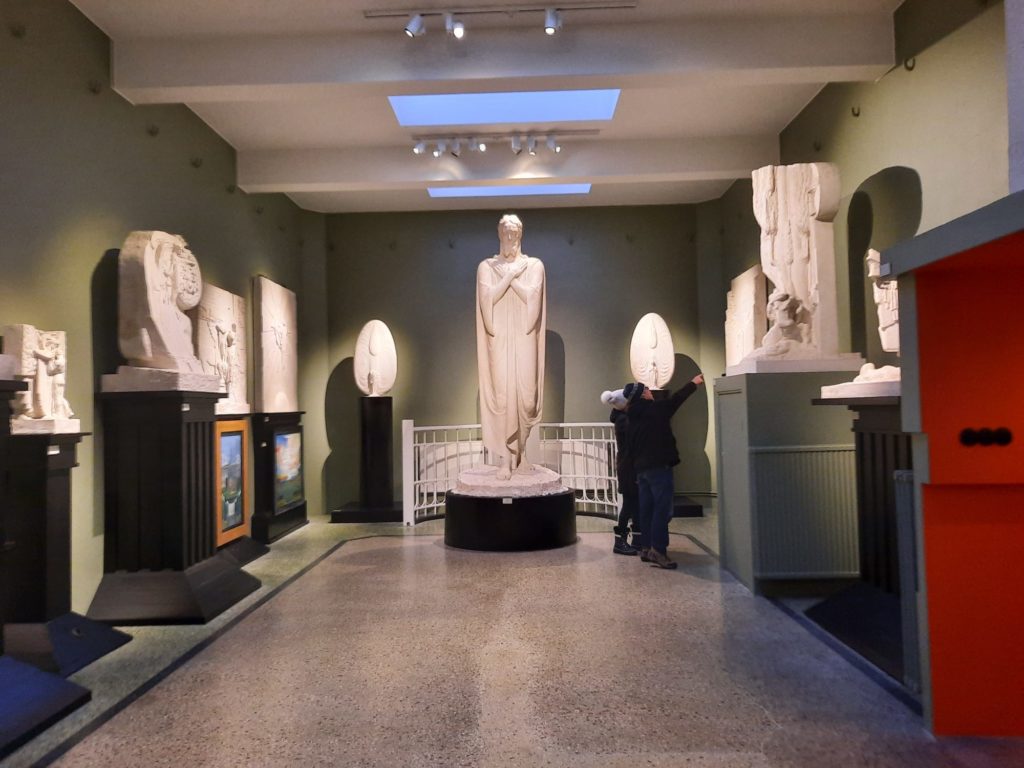
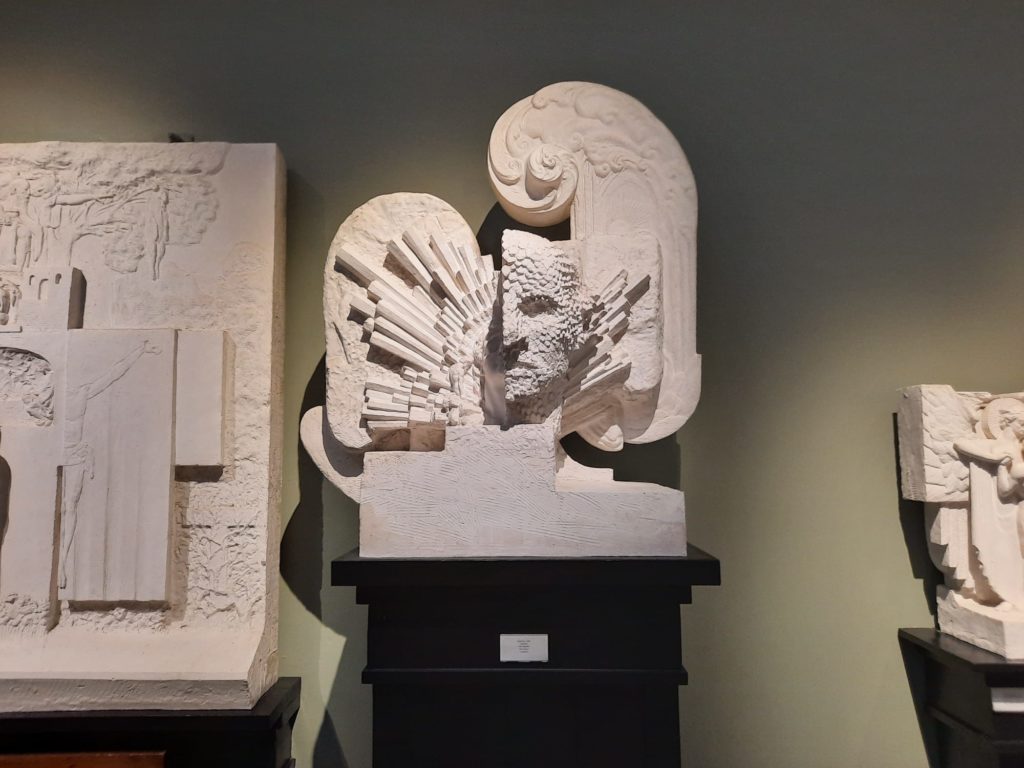
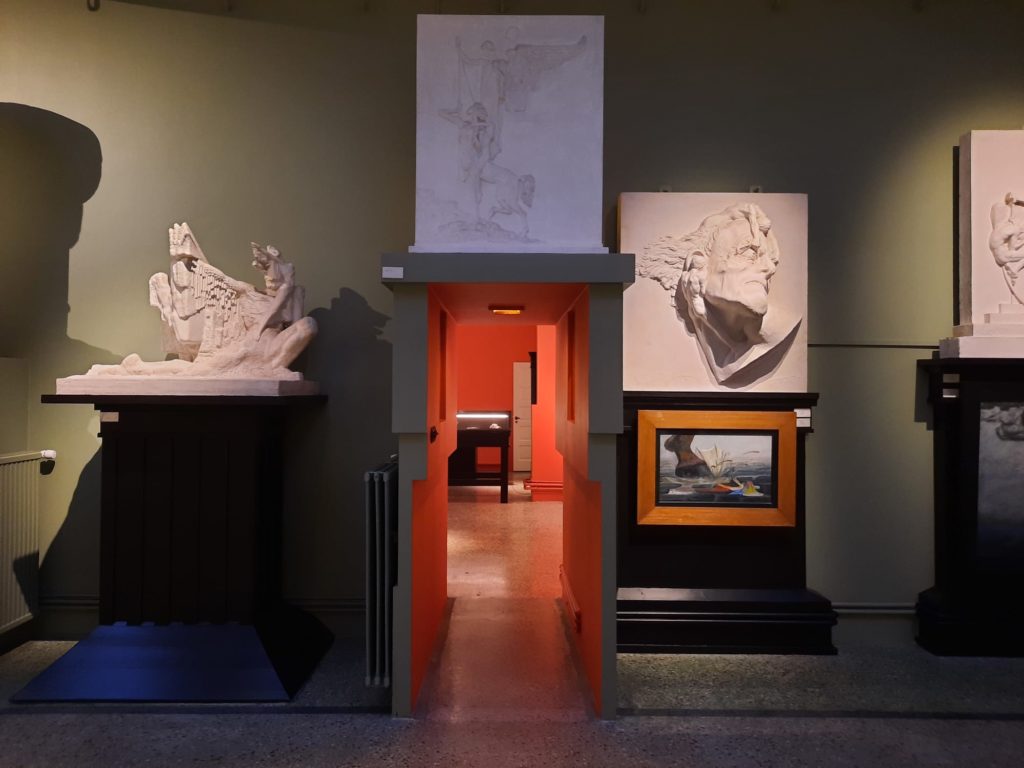
The Einar Jónsson Museum
So as we have already learned, this museum was the artist’s home for decades as well as functioning as an art museum. And there was a lot of input into the designs by the man himself. It’s rather an unusual building, I have to say. From the exterior it is very severe. It reminded me of the Vienna Secession style: not any particular examples of buildings but more the tendency towards right angles and narrow rectangular shapes.
And on the inside the use of space is unexpected. You come up some steps into a large hall. After looking at the artworks here you can choose to go either up a floor or down a floor, each via a tight spiral staircase. The floor upstairs reminded me of a lighthouse somehow: it feels like a pop-up window over Reykjavik. This is the ‘live’ part of this proto-live/work space. The downstairs floor has more artworks, and is a jumble of little rooms with what feels like an altar set into it at one point. It’s really odd.
But essentially that’s the layout: one floor the living space of Jónsson and his wife Anne Marie Jørgensen, two floors of his work. Unusually, Jónsson worked almost exclusively in plaster (not much suitable clay in Iceland I believe). What you see inside are therefore the works themselves rather than preparatory studies, although there are some of these too. Outside, later bronze casts are situated in a sculpture garden which I believe you can visit for free. I went out and explored this garden just as the last of the light was fading for the day, with Hallgrímskirkja looming behind the museum.

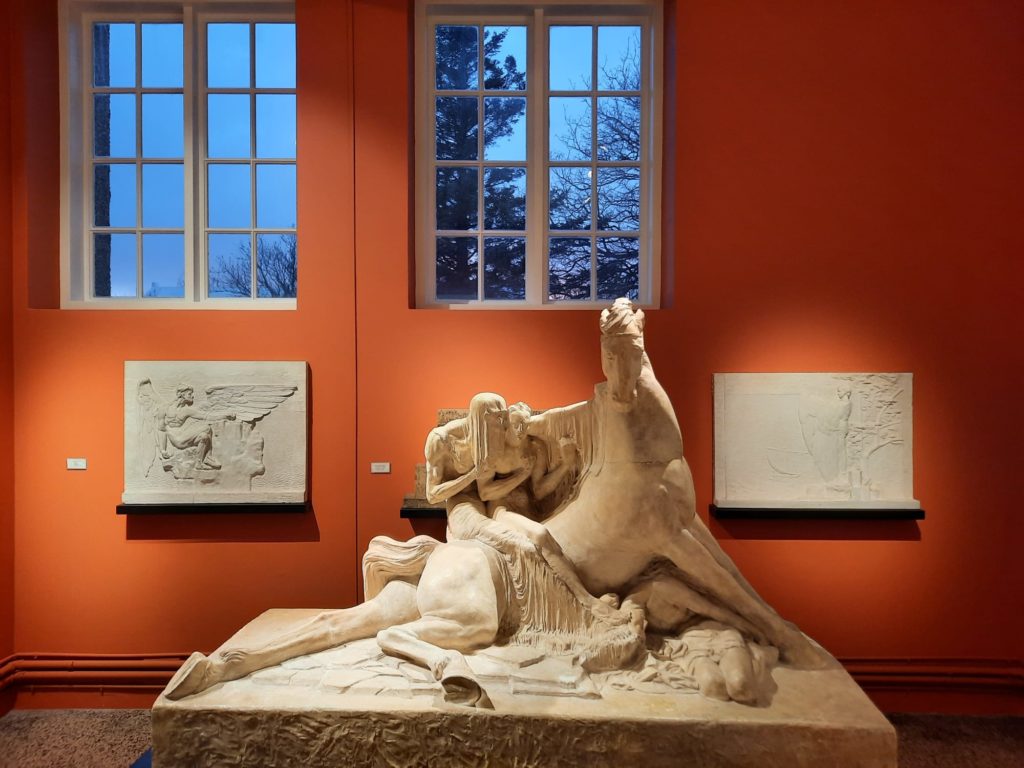
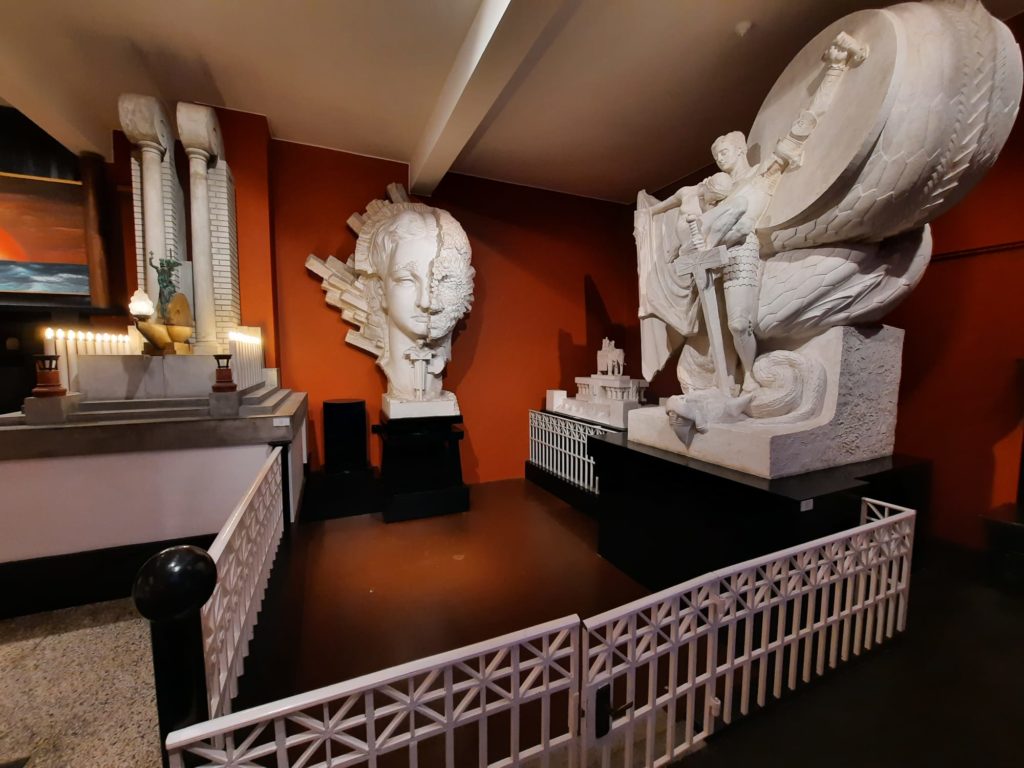
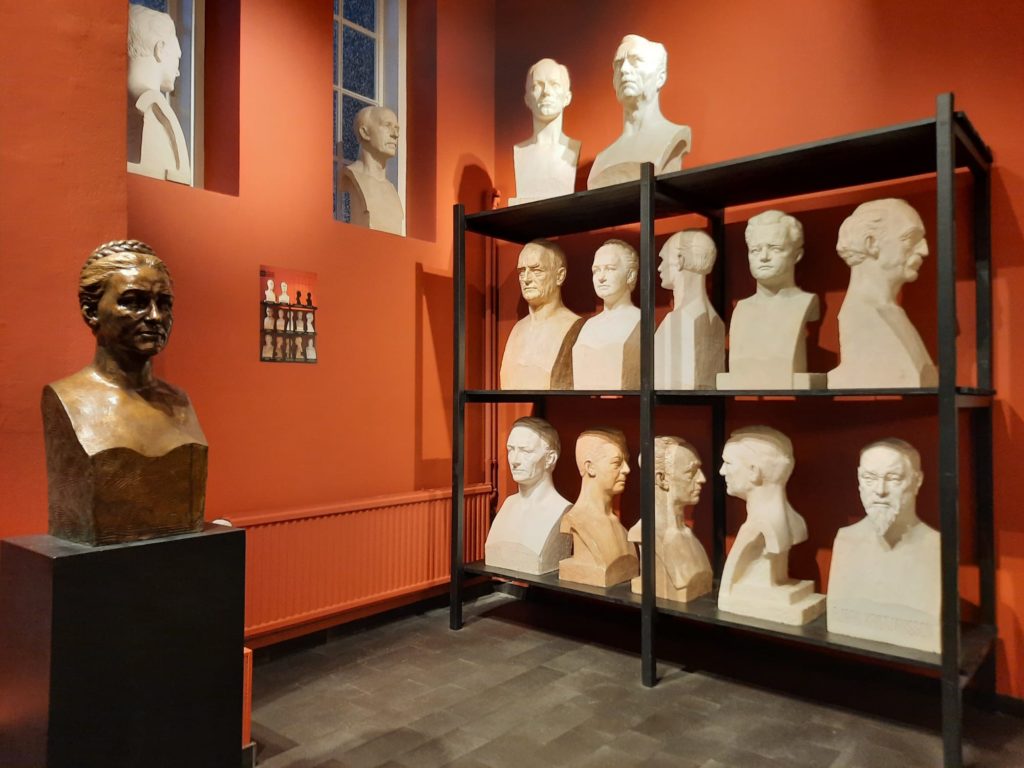
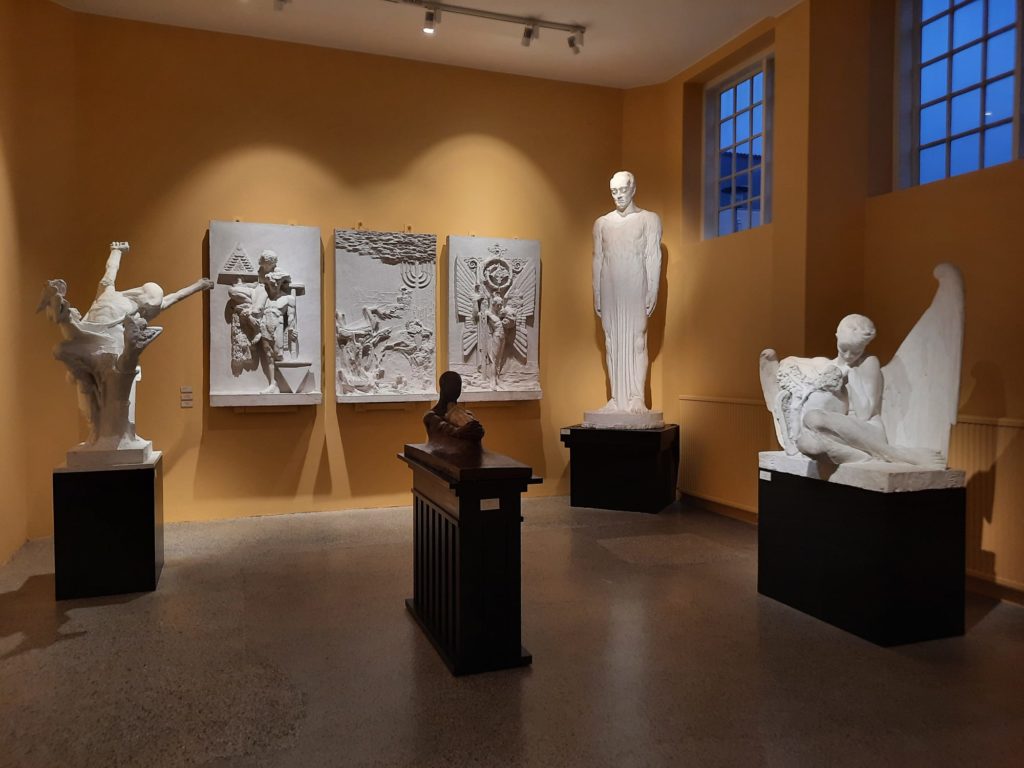

What About The Works Themselves?
There is no doubt that Jónsson was a talented sculptor. Portrait busts and other naturalistic works show his ability to capture a likeness and give a sense of a person’s character in plaster: no mean feat. Early on in his career, however, he rejected naturalistic depiction over creativity and imagination. In practice this meant he took on elements of a German Symbolist style: the closest parallel I can draw in the feeling of Jónsson’s works are the paintings of Arnold Böcklin. Austere, mysterious and with a sense of Gothic horrors looming somewhere below the surface.
This rejection of naturalism makes for some very original sculptural compositions. You really have to look at them carefully to spot figures at different scales, or who blend into the landscape around them. Sometimes multiple versions of a work in different locations in the museum give an opportunity to look again and discover something new. What came across most strongly for me was the artist’s spirituality. They feel like the works of someone with a deep and layered belief system: works which are trying to convey spiritual truths to us by stripping back the artifice of realism and modern life. The effect is a little melancholy, if I’m honest.
I can’t really call out any favourite pieces amongst the works. I liked the lines of them and the clever compositions. Sometimes you step back from a sculpture only to realise the figures make up a hidden shape (a crucifix for instance). The energy ranges from peaceful and meditative to insistent and jarring. For someone with a distinctive style, there is a real range there.
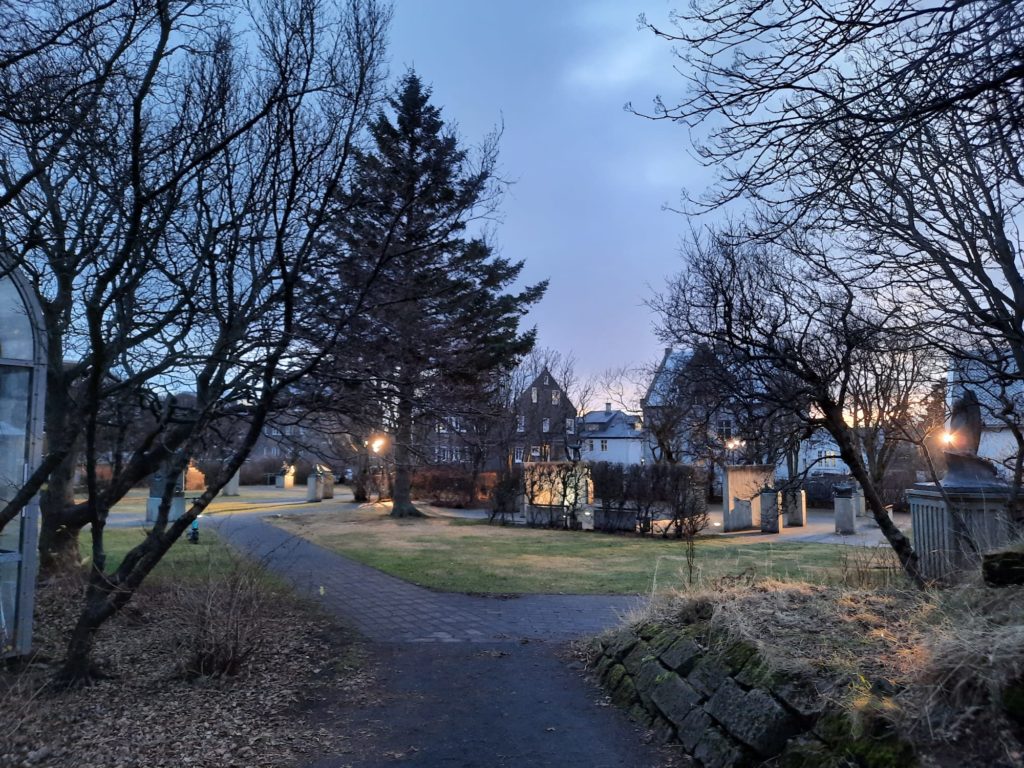
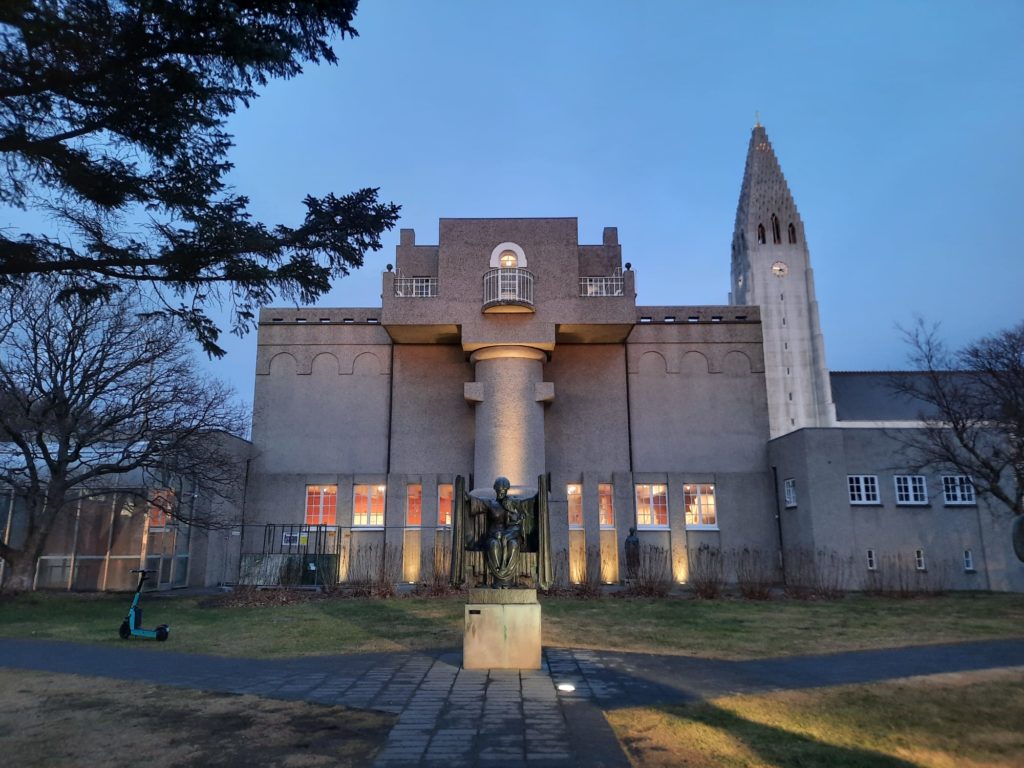
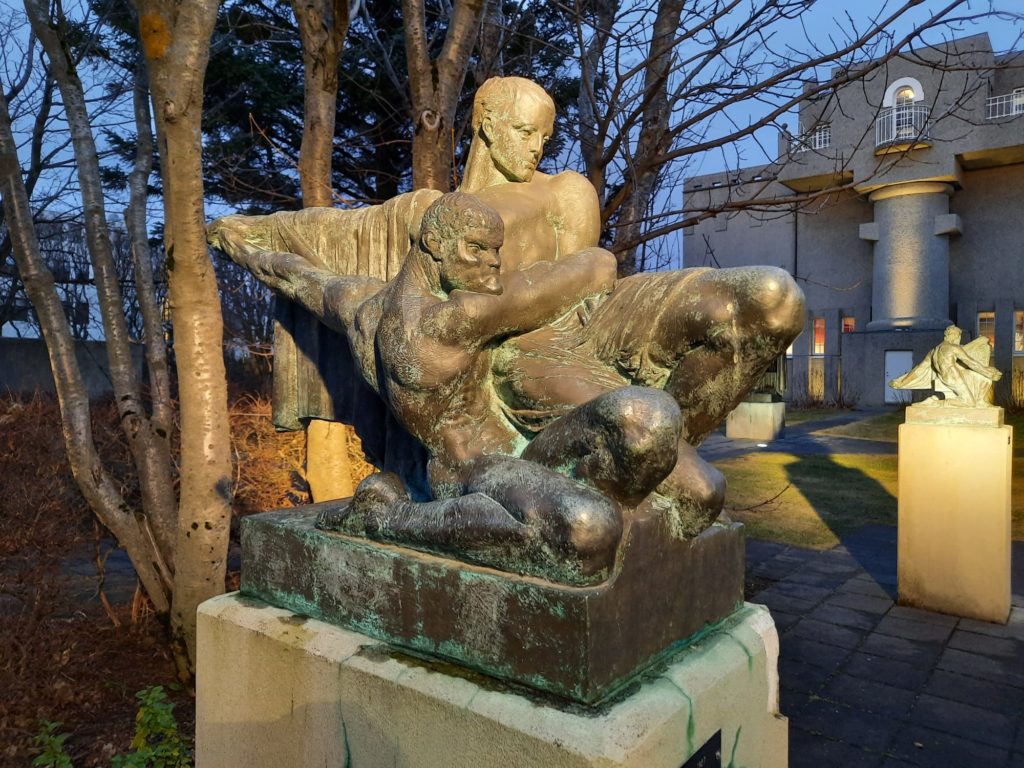

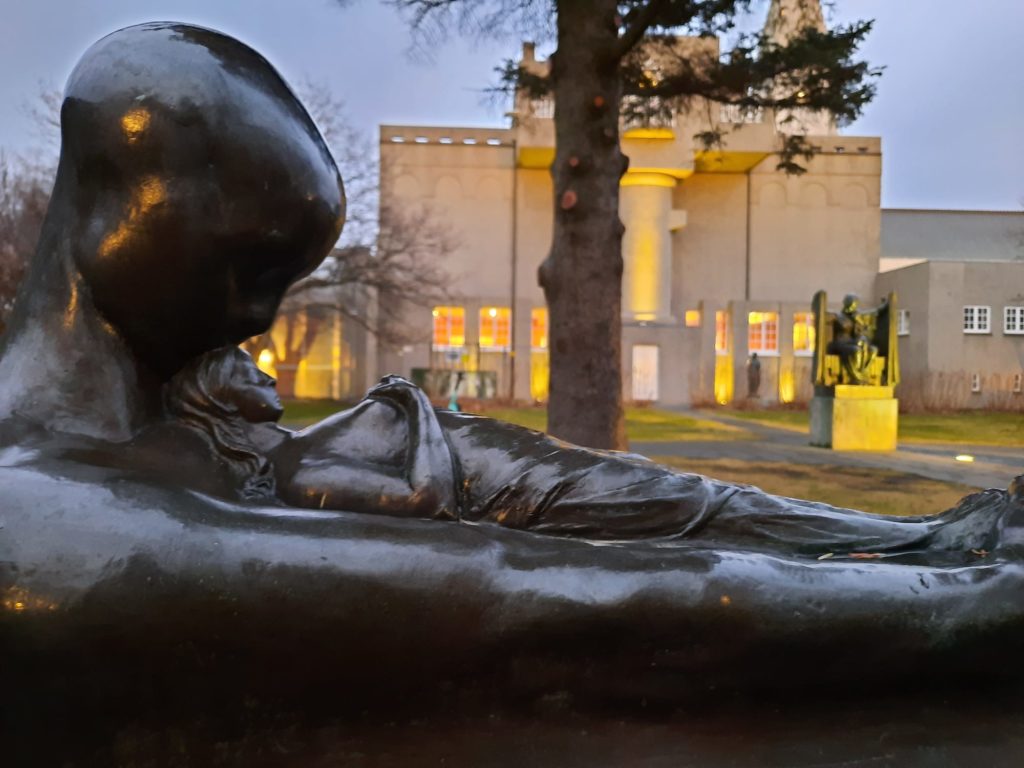

Final Thoughts On The Einar Jónsson Museum
In the end, I’m pleased with my choice. If I have the opportunity to visit Iceland again the Maritime Museum will be high on my list, but with the limited time I had, I’m pleased I came here. Iceland’s first art museum. Iceland’s first sculptor. An artist’s home, shaped by him as a place to live with his wife while he worked on ever more personal projects. You can learn a lot from such museums and really come away with a profound connection to the artist’s life and work.
If I had my time in Iceland again I would have been smarter and visited this museum on the first day when I came to Hallgrímskirkja. The two are almost next door to each other, and from my hotel in Grandi they are a reasonable walk (especially in the cold). So if you’re visiting Reykjavik, consider pairing the two.
When I visited on a Sunday afternoon there were hardly any visitors: just one couple there aside from myself. I hope this was to do with the timing, and that plenty of people get to experience this curious museum. At the same time, looking at Jónsson’s art feels like quite a personal experience and so this wasn’t a bad way to see it.
Salterton Arts Review’s rating: 4/5
If you see this after your page is loaded completely, leafletJS files are missing.

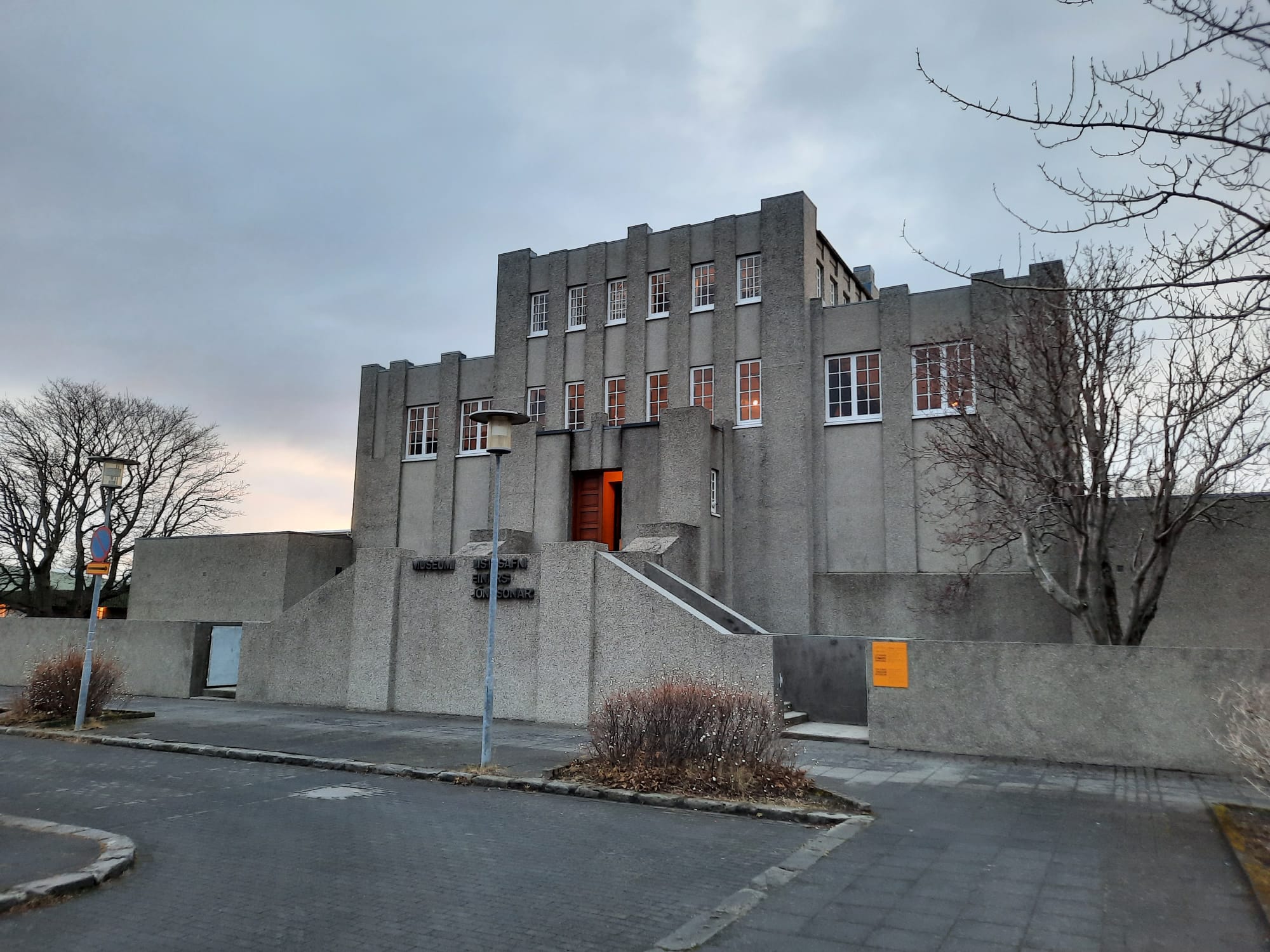
One thought on “Listasafn Einars Jónssonar (Einar Jónsson Museum), Reykjavik”